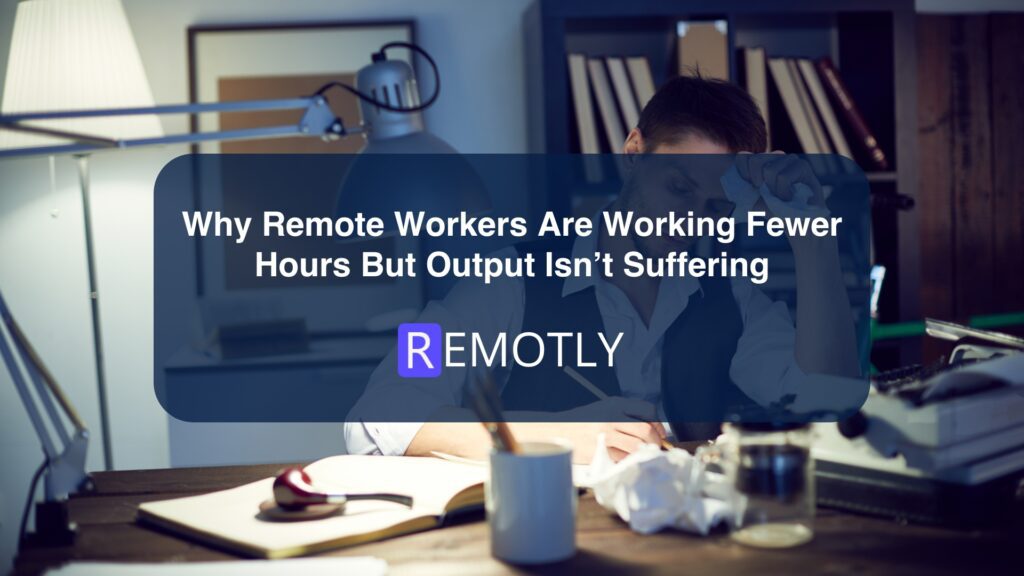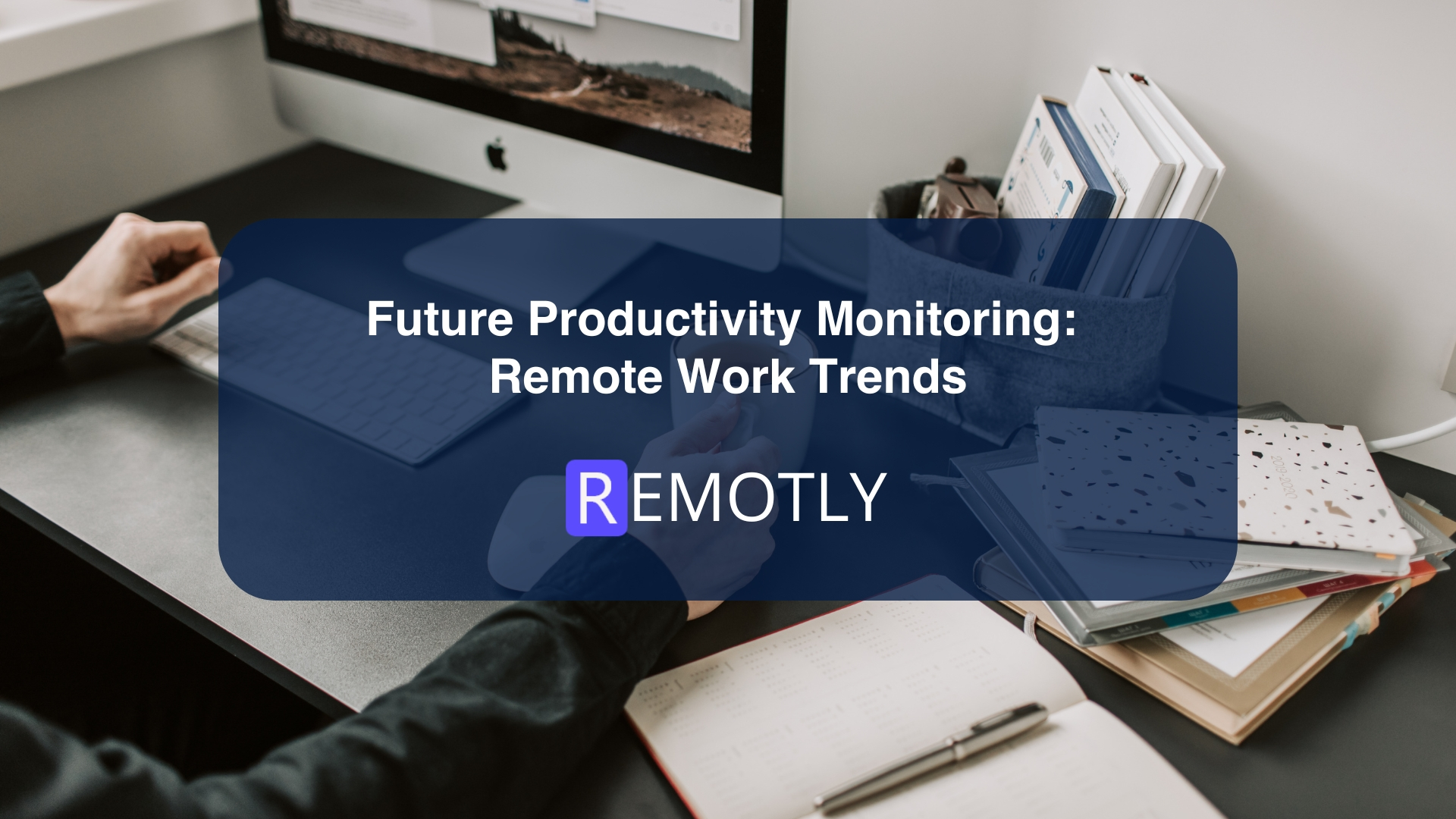Introduction: The Paradox of Remote Work Efficiency
In the years since remote work became mainstream, a curious pattern has emerged: remote workers are clocking fewer hours, yet their productivity hasn’t dipped. In many cases, it has even improved. This phenomenon challenges the long-held belief that more hours automatically lead to more results.
As organizations analyze time-tracking data, output reports, and engagement metrics, one truth stands out: productivity in the remote era is being redefined. The shift from time-based work to outcome-based performance has changed how we measure effort, success, and satisfaction in the workplace.
But why exactly are remote employees working fewer hours? And how are they managing to maintain or even increase their output levels? This in-depth article explores the science, psychology, and systems behind this surprising trend, revealing how efficiency, autonomy, and technology are reshaping modern work culture.
The Data Behind Fewer Working Hours
What the Numbers Say About Remote Work Time
Studies by Microsoft, Owl Labs, and Buffer have consistently shown that remote employees are spending less total time working than before the pandemic. A 2024 Owl Labs report revealed that remote professionals work an average of 34 hours per week, compared to the traditional 40-hour office standard.
However, despite the decline in logged hours, key performance indicators (KPIs) have remained stable and in some industries, even improved by 10–20%.
Microsoft’s 2023 “Work Trend Index” found that output per hour has increased by 18% since 2020, particularly among knowledge workers who rely on digital tools rather than physical labor.
Understanding Productivity vs. Presence
For decades, “being at work” meant being physically present. Managers equated long hours at the office with dedication and productivity. But remote work shattered this illusion.
Without commutes, office politics, or micromanagement, workers started to reclaim lost time and reallocate it toward focused, high-quality work sessions. The result? Less time spent better results delivered.
Why Remote Workers Are More Efficient in Less Time
1. The End of the Commute = More Energy and Focus
Commuting has always been a silent productivity killer. The average urban professional spent over 60–90 minutes daily traveling to and from work time that contributed to fatigue and stress.
Remote work removed that burden, giving employees extra hours each day for rest, exercise, or early project starts. That reduction in daily friction has a measurable effect on energy levels and output quality.
In fact, a Stanford University study found that remote employees are 13% more productive largely due to fewer distractions and better work-life integration.
2. Task-Based Mindset Over Time-Based Work
In remote environments, success isn’t measured by how long you sit at your desk, it’s measured by what you produce. This task-based culture encourages deep work, where employees focus on meaningful deliverables rather than performative busyness.
Platforms like Asana, ClickUp, and Notion have amplified this shift. Workers can now prioritize tasks, set measurable goals, and visualize progress, replacing the old “9-to-5 grind” with a flexible, efficient system.
3. Freedom to Design the Ideal Work Schedule
Remote professionals are discovering when they work best and structuring their days accordingly. For example, developers may code best at night, while designers prefer early-morning creativity sessions.
This freedom to align work with natural productivity rhythms has a massive impact on performance. A 2023 Slack report found that 78% of remote workers feel more productive when allowed to set their own hours.
When people can work in harmony with their biological peak times instead of forcing productivity during office hours they get more done in less time.
The Psychological Edge of Remote Work
Autonomy Breeds Motivation
Autonomy is one of the strongest psychological motivators. According to Self-Determination Theory (SDT), people perform best when they have control over how they do their work.
Remote work offers this autonomy in abundance and that’s why employees often work fewer hours yet accomplish more. They’re not just working; they’re choosing to work efficiently.
This intrinsic motivation drives engagement, creativity, and problem-solving key ingredients for sustained performance.
Less Burnout, More Sustainability
Traditional office environments often encourage “performative overwork.” Employees stay late to look dedicated, even when they’re mentally drained.
Remote work helps break that pattern. With better work-life balance and fewer interruptions, people can maintain consistent energy throughout the day leading to more sustainable productivity over time.
A 2024 Harvard Business Review study found that burnout rates among fully remote employees dropped by 22%, correlating directly with reduced work hours and improved mental well-being.
The Power of “Deep Work” Time
Cal Newport’s concept of deep work long stretches of focused, uninterrupted effort has become the hallmark of remote productivity.
Without open-office chatter, unnecessary meetings, or random interruptions, remote workers can enter a state of flow, producing high-quality output in half the time.
As companies adopt asynchronous communication tools like Loom and Notion, this deep work culture continues to expand, replacing reactive work with proactive creation.
Technology’s Role: Automation and AI as Productivity Multipliers
Smart Tools Eliminate Repetitive Work
Remote work thrives on digital infrastructure and modern tools are eliminating hours of manual labor.
From AI email summarizers to project automation via Zapier and Make.com, employees can now delegate repetitive tasks to software. This frees up time for strategic thinking, creative work, and decision-making.
For example, marketers can automate analytics reports, content scheduling, and lead scoring saving 5–10 hours per week while maintaining output consistency.
AI-Assisted Productivity
Artificial intelligence has become a silent coworker for many remote professionals. Tools like ChatGPT, Jasper, and Grammarly help workers ideate, write, debug, or analyze in seconds significantly reducing the time spent on cognitive-heavy tasks.
When employees use AI to accelerate execution while maintaining human creativity, the productivity-per-hour ratio naturally rises.
Cloud Collaboration and Async Communication
Cloud-based ecosystems like Google Workspace, Slack, and Microsoft Teams enable instant collaboration from anywhere without synchronous pressure.
By shifting toward asynchronous work models, teams avoid endless video meetings and instead communicate through messages, recorded updates, and shared documents.
This approach cuts coordination time while preserving clarity meaning teams accomplish more in fewer hours.
The Hidden Efficiency Factors Remote Work Unlocked
Fewer Office Distractions
Offices, despite their professional image, are full of distractions, casual chats, loud calls, random drop-ins, and unplanned meetings.
Remote work minimizes these micro-distractions. Even short interruptions can reduce focus for up to 23 minutes (according to UC Irvine). Eliminating them allows remote workers to maintain consistent cognitive momentum, which is far more time-efficient.
Selective Meeting Culture
Companies embracing remote-first models are rethinking meetings altogether. Instead of defaulting to daily syncs, they use async updates and structured agendas.
This evolution has drastically reduced time wastage, one of the biggest drains in corporate environments. Research shows that reducing unnecessary meetings can reclaim up to 10 hours per week per employee.
Personalized Work Environments
Finally, remote workers can tailor their surroundings for focus lighting, noise, setup, music all optimized for individual needs.
This personalization is not trivial; studies link ergonomic, personalized spaces to 15% higher cognitive performance. The fewer hours worked are thus higher-quality hours.
Why Output Isn’t Suffering It’s Actually Improving
Shift from Quantity to Quality
Remote work measures results, not appearances. Instead of filling hours, employees focus on impact.
This quality-first mentality improves overall company performance because workers are aligned with outcome-based goals, not time-based metrics.
When tasks are clearly defined and deliverables measurable, fewer hours can lead to sharper, more intentional output.
Better Alignment with Personal Well-Being
Healthier employees produce better work. With more time for sleep, family, and exercise, remote workers are reporting improved concentration and creativity.
A well-rested mind can do in 5 hours what a stressed one might take 10 to achieve. This “health-productivity loop” explains why fewer hours don’t necessarily mean less work done.
Results-Oriented Cultures Over Micromanagement
Progressive companies like GitLab, Basecamp, and Zapier have built results-oriented cultures (ROCs) where trust, transparency, and accountability replace traditional oversight.
When employees feel trusted, they self-regulate better completing projects faster and with higher quality.
What This Means for the Future of Work
The 4-Day Workweek Trend
The success of remote efficiency has reignited the four-day workweek movement. Trials in the UK, Iceland, and Japan show that companies adopting shorter weeks see productivity stay the same or even rise by 25%.
The reason? Remote and hybrid models have already proven that fewer hours can mean better focus. The four-day model simply formalizes that realization.
Rethinking Managerial Mindsets
Managers must shift from tracking hours to tracking outcomes. Time-tracking tools may give visibility, but true leadership lies in defining clear KPIs and empowering teams to meet them autonomously.
Hybrid Flexibility Will Define the Future
The most sustainable model seems to be hybrid flexibility giving workers the freedom to choose where and when they are most productive. This model balances human connection with autonomy, combining the best of both worlds.
Conclusion
Remote work didn’t just change where we work it transformed how we work. The realization that fewer hours can yield the same (or greater) results represents a cultural shift as significant as the Industrial Revolution’s move to the 8-hour day.
As employees prioritize focus, well-being, and purpose, and as AI and automation continue to augment human potential, the traditional concept of “working harder” is giving way to “working smarter.”
In the coming years, the most successful companies will be those that embrace output-driven flexibility, valuing impact over input and recognizing that productivity isn’t measured by the clock, but by the quality of what’s created.
FAQ’s
Why are remote workers working fewer hours?
Because remote work eliminates commuting, reduces distractions, and allows employees to work during their most productive hours. This efficiency lets them achieve the same results in less time.
How do remote workers maintain high productivity with fewer hours?
Through deep work, flexible scheduling, automation, and reduced burnout, remote workers focus on output quality rather than time spent.
Has remote work reduced overall company performance?
No. Studies show that productivity has remained stable or improved by up to 20% in remote and hybrid organizations.
Will fewer working hours become the norm?
Yes, as businesses adopt four-day workweeks and flexible models, shorter yet more focused work schedules are expected to become standard in knowledge-based industries.




